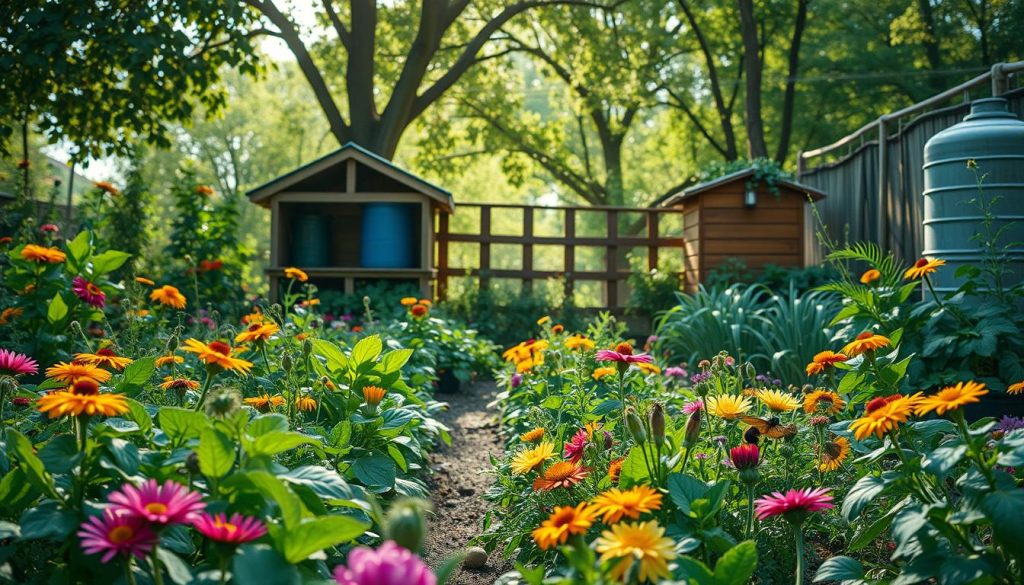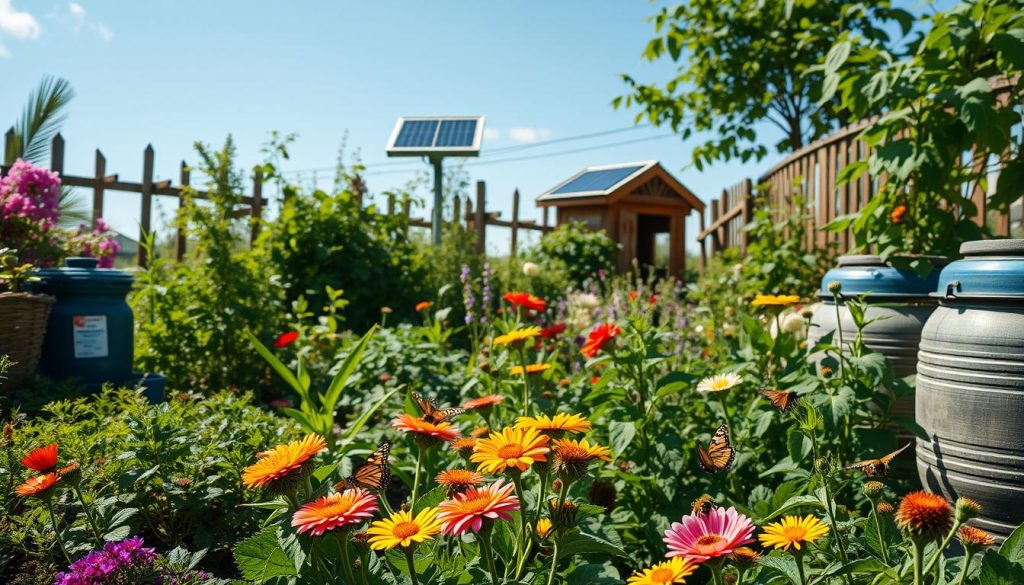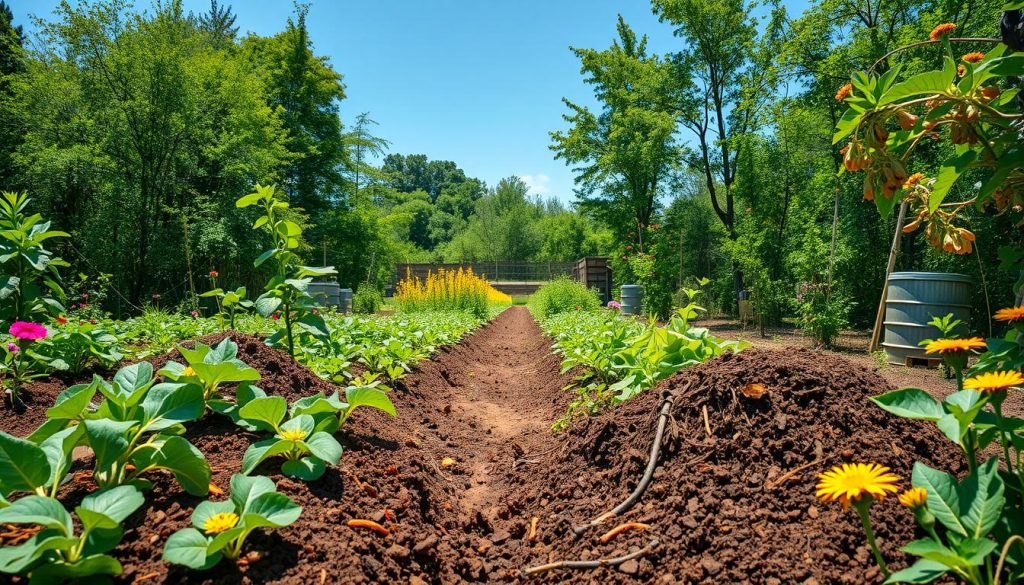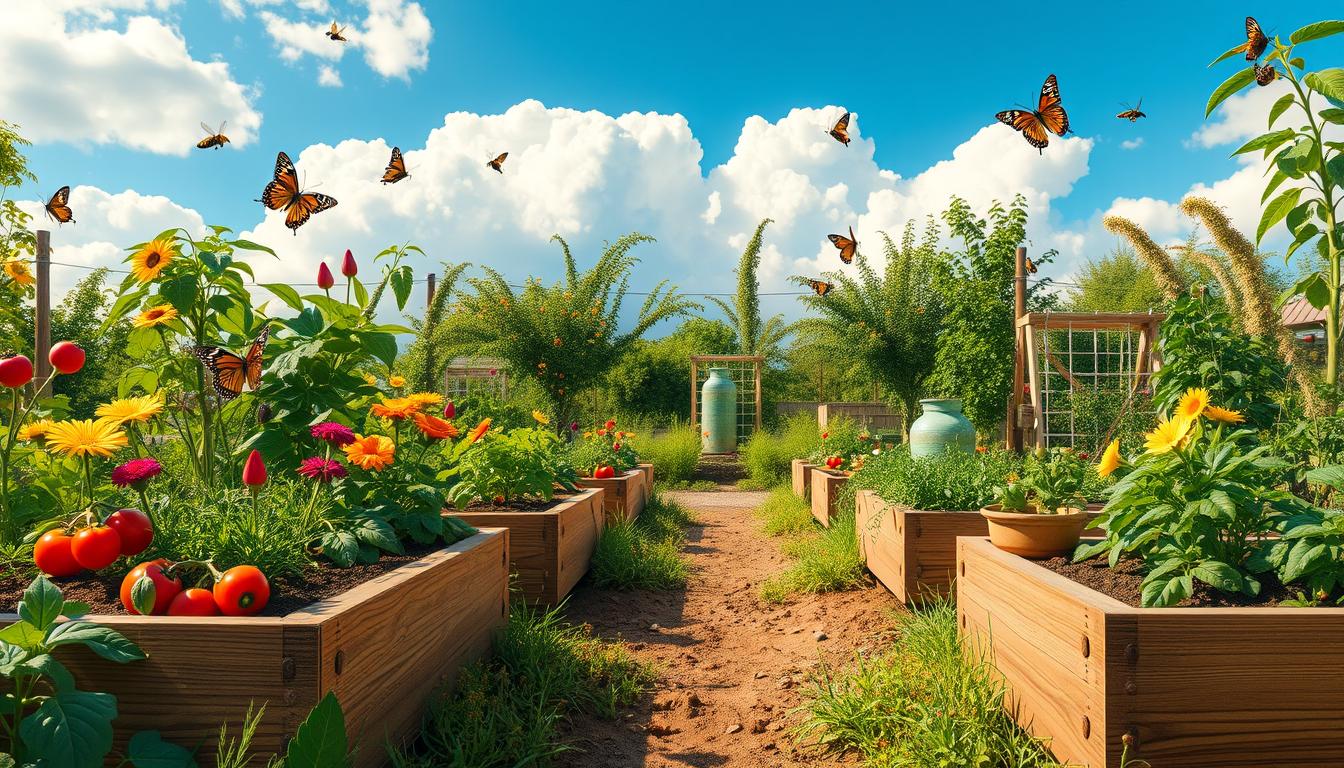I’ve always loved growing my own food in a way that’s good for the planet. Organic gardening and urban farming help a lot. They cut down on carbon, save water, and support different kinds of life.
It feels great to grow your own food in a sustainable way. It connects me to nature and makes me appreciate life’s simple joys.
My journey has shown me how important urban farming is. It brings people together and encourages us to live more sustainably. I want to share my story and encourage others to start their own sustainable gardens. Let’s work together to make our planet a better place.
Embracing the Idea of Sustainable Gardening
Starting my gardening journey showed me the value of sustainable practices. It’s good for the environment and makes my garden healthier and more productive. Sustainable agriculture, regenerative farming, and permaculture guide my gardening.
Sustainable gardening is more than just growing food. It’s about keeping soil healthy, saving water, and avoiding harmful chemicals. By doing this, I create a garden that’s good for me and the planet.
My Motivation for Growing Food
I grow my own food to be self-sufficient and know what I eat. Sustainable gardening lets me do this while helping the environment. It also supports biodiversity and cuts down on carbon emissions.

The Joy of Gardening and Nature
Gardening has brought me joy and a connection to nature. Being outside, surrounded by nature, feels incredibly fulfilling. I’ve learned how permaculture and regenerative farming help create a balanced ecosystem.
Understanding Sustainability in Food Production
As I keep gardening, I learn more about sustainable food production. Practices like crop rotation and composting are key. They help me grow a healthy garden that’s good for me and the planet.
Creating a Space for My Garden
To start my gardening journey, I needed a space that would grow well. I focused on eco-friendly gardening and local food production. I looked at sunlight, soil quality, and water availability. Choosing the right spot and soil helped me create a garden that’s good for both my family and the planet.
When designing my garden, I thought about eco-friendly gardening practices. I wanted to use natural pest control and compost. This way, my garden would be sustainable and beneficial for everyone. Here’s how I got started:
- Assessing my yard to find the best spot for my garden, considering sunlight and water.
- Testing my soil to see its pH level and nutrient content, helping me pick the right plants.
- Designing a garden layout that uses space well and promotes healthy growth, all while being eco-friendly.
By following these steps and using eco-friendly gardening practices, I made a thriving garden. It supports local food production and helps the environment. 
Choosing What to Grow
Starting my organic gardening journey taught me the value of picking the right plants. I looked at climate, soil, and what I liked. I aimed for a garden that was good for the planet, used less water, and avoided harmful chemicals.
Choosing vegetables that are good for the earth is key. Leafy greens like kale and spinach are great. So are root veggies like carrots and beets. They’re not only healthy but also simple to care for. This helped my garden become a lively place for many plants.
Picking Sustainable Vegetables
- Leafy greens like kale and spinach
- Root vegetables like carrots and beets
- Herbs like basil and mint
Knowing when to plant is also important for a good harvest. Planting at the right time means my plants got the right amount of sun, water, and food. This made my crops better and helped the environment.
Understanding Seasonal Planting
By following these tips and using organic gardening, my garden thrived. It became a place that was good for the earth, used less, and gave me plenty to eat.
Nurturing and Maintaining My Garden
To keep my garden thriving, I’ve adopted regenerative farming practices. These focus on soil health and biodiversity. I’ve cut down on synthetic fertilizers and pesticides, making my garden more sustainable.
This change has improved my produce’s quality. It has also saved water and reduced waste.
Some key techniques I’ve implemented include:
- Watering wisely: using drip irrigation and mulching to minimize evaporation and runoff
- Organic pest management: introducing beneficial insects and using natural pest control methods
- Composting: turning food scraps and yard waste into nutrient-rich soil amendments

By embracing permaculture principles, my garden works in harmony with nature. This approach minimizes external inputs and boosts biodiversity. It has created a thriving ecosystem that produces plenty of fresh, healthy produce.
As I continue to care for my garden, I’m always learning. I adapt new eco-friendly gardening practices. This ensures a bountiful harvest for years to come.
Sharing My Bounty and Lessons Learned
My sustainable gardening journey brings me joy. I love sharing my homegrown produce with my local community. Connecting with neighbors and community centers shows the power of working together.
Seeing the joy on their faces when they taste my fresh veggies is rewarding. It shows the impact of locally grown food on people’s lives.
Preserving and Storing Homegrown Produce
To enjoy my harvest all year, I’ve learned to preserve and store my produce. Canning, freezing, and dehydrating are key skills. They help me keep food fresh longer and reduce waste.
These methods also help me rely less on industrial food systems. They support my goal of growing food sustainably.
Inspiring Others to Grow Sustainably
Sharing my gardening stories is a passion of mine. I join local sustainable agriculture groups and host workshops. It’s rewarding to see others get excited about growing their own food.
Together, we can build a network of gardeners. We all contribute to a greener future.

